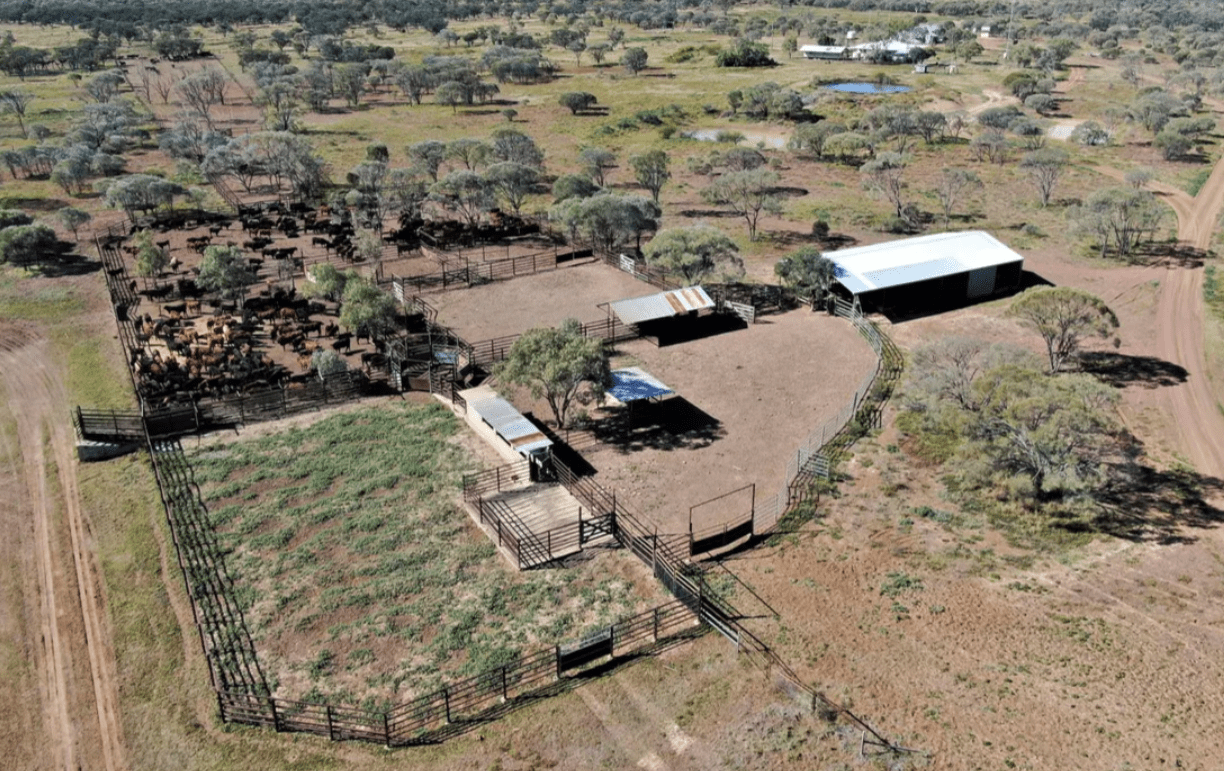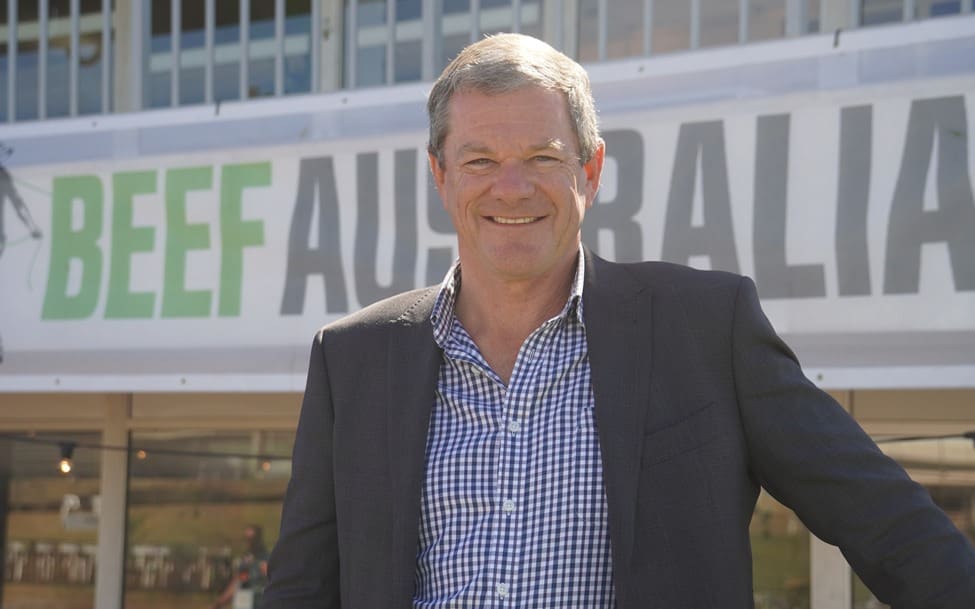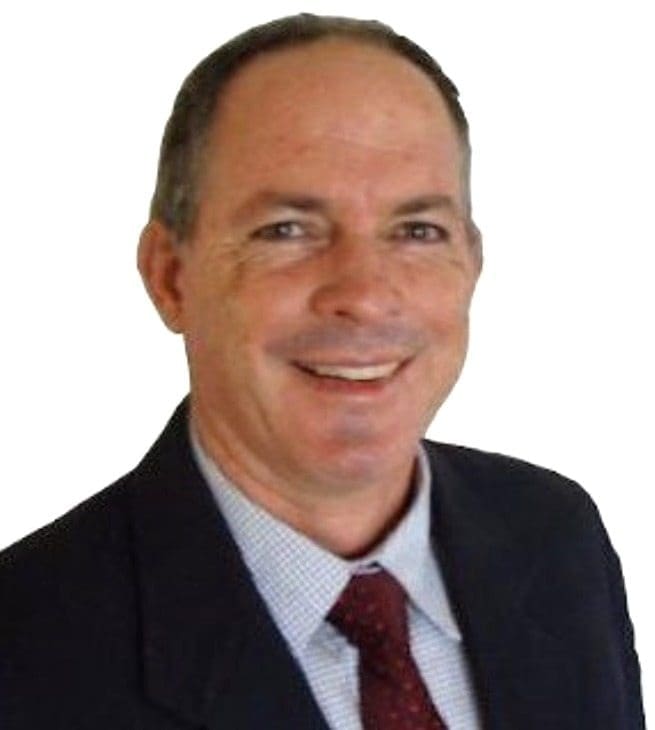
Yards and cattle on Peronne, near Hughenden in North Queensland
AN old saying is, ‘You get what you pay for’.
But when an individual or company is looking to buy a grazing property, should the emphasis be on size, production, potential, stocking rates or carrying capacity – or a combination of the above?
According to the experts, prospective purchasers step up and offer more for profitable grazing enterprises that are expertly assessed. Just what makes up this assessment is the million-dollar question.
CBRE agribusiness managing director David Goodfellow said agricultural land values are now largely based on yields.

CBRE Agribusiness managing director David Goodfellow
“People buying farms rarely rely on land quotes using ‘dollars per hectare’ because they are not just focused on the area of land, they are buying the productivity.”
Mr Goodfellow said what a property is producing and how it converts into income ultimately determines its price.
“It is not just about the number of hectares. An asset’s productivity determines its revenue, which determines its profit, which in turn determines how much interested parties are prepared to pay for that property.”
Mr Goodfellow cited buying an office tower in a major metropolitan city as an example.
“The first thing a prospective office buyer wants to know is the rental return. It is the income and ultimately the net profit (relative to interest rates) that determine what they will pay.”
Mr Goodfellow said in the same way, investors want to know how much money they are likely to make from a cattle property.
“This is ultimately determined by the expected productivity (as well as commodity prices), which is determined by properly analysing and understanding monthly rainfall, monthly reliability and monthly temperature and soils.”
He said these figures are being demanded by an increasing number of buyers and sellers.
“Corporates and institutional investors want to see what the property’s value is, relative to its productivity.”
“Small to larger farming families seeking finance from banks are also requesting the rates. Banks want to be confident that a property’s potential profitability, which is ultimately required to service the loan, can be delivered on,” he said.
Mr Goodfellow believes the analysis gives prospective buyers the confidence to offer a better price for a property.
“When people trust the information, then they are happy to step up and pay what they can afford for a property. Whereas, if they are vague or suspicious about the story, they will reflect that in their offers.”
“A chief executive/investment officer in a big pastoral company doesn’t want to risk their career by depending on someone’s nonsense. They need to know the data they are relying on for their own analysis has been verified and comes from a trustworthy source,” he said.
Mr Goodfellow believes the right information will be more widely used as the market becomes more sophisticated.
“In the past, some agents have stretched the truth and as a result, have faced litigation. Misleading a client means that agent will never have a chance to deal with that buyer again.”
He said these days, investors relied more on experts who can provide accurate data when buying or selling a place.
“Buyers are becoming much more sophisticated with their investment decisions and most successful farm business operators appreciate getting access to this information when making investment decisions, rather than having to do all their own research.”
Mr Goodfellow’s suggested benchmarks are:
- 1 Dry Sheep Equivalent (DSE) = 45kg Sheep – ie a 60kg ewe with two 22kg lambs = 2.3 DSE
- 1 Adult Equivalent (AE) = 450kg Beef Cattle – ie a 520kg cow plus a 130kg calf = 1.44 AE
- 1 WTE = 1.0 tonne ASW wheat
- 1 WTE = 1.1 tonnes Barley
- 1 WTE = 0.5 tonnes Canola
- 1 WTE = 0.6 tonnes Faba Beans etc
Ben Forrest, Resolute Property Group
Ben Forrest from the Resolute Property Group believes many property buyers still assess the price of country on a nominal ‘dollars per hectare’ basis, but also compare value using a production measure.

Ben Forrest
“Production area values such as Beast Area Value (BAV) or Dry Sheep Equivalent (DSE) are also a quick way for producers to try and ‘standardise’ prices and benchmark value across different regions,” he said.
“While producers still commonly talk in dollars per acre or hectare, they will also usually calculate dollars per adult equivalent/dry sheep equivalent as further analysis of a property deal. They usually have the two figures in mind,” he said.
Mr Forrest said many beef producers also calculate breeder area values, not just beast area values.
“While Beast Area value (BAV) is the most broadly expressed unit nationwide, Breeder Area values are also front of mind for many, particularly in northern Australia, where it is primarily breeder country.”
A dry beast area conversion to a breeder area generally works on a factor of between 1.5 and 2 times. A cow and calf require 1.5 to 2 times the grazing area and therefore the dollar area value is relative to that.
At Longreach in Western Queensland for example, a breeder area may be 10 hectares for a cow, which equates to around six hectares for a dry beast/backgrounder. It is also a sheep region in many places running a dry sheep to 1.2ha or (three acres).
Mr Forrest said $/ha and $/BAV are simply two measures that cross reference price and value, and attempt to create a standardisation across regions.
He said most producers converted nominal area prices into livestock area values.
“In recent years family operators have stepped-up to compete strongly against corporates and other institutions. These producers have always been nimble and efficient. They know their figures for dollars per hectare and beast area value and are becoming as sophisticated as any other buyer, corporate or otherwise.”
Mr Forrest said taking the dollar per hectare value (nominal price) and a carrying capacity and determining an area value for an animal unit was not new, it was simply looking at the land price from a production angle.
“It is a measure that is becoming more analysed as the market gets competitive and buyers acquire more land across different regions. While sale price per hectare is a fixed number – BAV or DSE numbers can get a little variable depending on the carrying capacity assumption used.”
He said AE and DSE values can range dramatically across the regions depending on the quality of the country, rainfall and location.
“Some country further west may appear cheaper on an AE basis or a breeder area value, but you do get what you pay for. The more volatile the rainfall, the more volatile the carrying capacity and you tend to see a lower $/BAV number to allow for that uncertainty.”
Mr Forrest said location was another factor because there were many who wanted to be near town and often a premium is paid for that real estate over and above production.
Recent examples
- October – 2898ha Malo at Theodore, in Central Queensland’s tightly-held Dawson Valley, made $22.5 million or $7764/ha bare. Mr Forrest said the heavy carrying capacity country which can run around 1300 adult equivalents achieved $27,700 a breeder value area or $17,000/AE (using the 1.6 as a conversion).
- August – Hughenden’s 9788ha Peronne Station achieved a record $13.1 million (including 480 cows) or around $1185/ha on a bare basis. On a breeder area, that equated to $10,000.
- June – 10,191ha Bellen Park, 70km south of Longreach, sold for $685/ha. Mr Forrest said that equated to more than $900/DSE (sheep) or around $6500/breeder area (cattle).
Peter Honnef, JLL
JLL Agribusiness’s North Queensland based valuer Peter Honnef said many people confused carrying capacity with stocking rates.
“Stocking rates change with seasonal conditions and how a property is run. Carrying capacity is a long-term average. A landholder might have a really good wet season one year and drought the next couple of years. The stocking rate changes, but the carrying capacity doesn’t.”

Peter Honnef
Mr Honnef said over the past 20 years, rates had improved.
“For example, forest land type in North Queensland was one adult equivalent to 14 hectares. With water development, supplementary feeding and different cattle breeds, that same land is now rated at carrying 1:8.”
He said some in the industry were not comparing like-with-like.
“Breeding cattle in southern New South Wales are different to the breeders in Cape York. We want to know the type of animal and how many are being run every year. We break the numbers into age class, assess weight range and then work it all back to 450kg equivalent.”
Mr Honnef said these rates were valuable in terms of linking a property’s worth or value to its productive capacity.
“Land area alone doesn’t demonstrate productivity. A property’s price divided by the number of adult equivalents does – by demonstrating the dollar per adult equivalent area (the area one AE requires for grazing to maintain weight).”
He said another important consideration was rainfall and the annual quantity of dry matter that is produced by the land.
“There is an optimum level of land development in Northern Australia scientifically researched to be around a 4km radius from a water point,” he said.
“Therefore, a simulated pasture model is used to assess the number of AEs that such land can sustainably carry under prudent management practices. A simulated pasture model also assists to understand further carrying capacity potential or on the other hand, stock water development overcapitalisation.”

Carrying capacity in the rangelands should take into account total grazing pressure. The grazing pressure of native and feral animal grazers would add at least 10% to the grazing pressure.
The carrying capacity will also vary with the grazing system being used.
Where a long-term safe carrying capacity is provided it usually refers to 8 out of 10 years with a continuous grazing system.
Is there public information of litigation for misleading customers on carrying capacities/ production etc?
Like Earnings-per-Share in the stock-market, $/Acre (or Hectare), is a number you may work back to.
Neither is to be considered as a ‘driver of value’.
Like Equity, they are mere ‘residuals’. IMO
Alway, in any farm-valuation process, start with measuring the out-puts and in-puts of resources across time: start with economic ‘production-ability’ … that’s where the gravy is at (cash-flows and EBIT) … and where ‘value’ sits. IMO
Of course, the actual market is always correct on the day …
I put Beast-Area-Value in first-position … and for a number of important reasons as regards the question of ‘VALUE’ … and because value is all about future expectations.
If BAV is applied correctly, and appropriately, many ‘things’ are found: and do remember that BAV at its base-level, is (and always was) about ‘the value of an average-beast’ …
Anything above that is arguably ‘a premium above market’ … IMO
It works …
Hi Michael, thanks for your comments. As we all know, there are different interpretations of what a “cow”, “beast”, “adult”, etc is. What we are seeing more and more in our industry is the expectation to have a “standard” that we can all rely on. On that basis, the most popular “standard”, used by many participants in our industry including our financiers and educational institutions these days is 450kg per AE (and 45kg per DSE) because we all know and trust what a “kg” is and detailed climatic and soils analysis can predict how many kg’s of livestock can be sustained on a property. We are seeing that this is the most trusted benchmark for analysing “carrying capacity” from which farmers/investors can then determine for themselves how many cows, calves, steers, heifers, bullocks, bulls, buffer, etc they think is appropriate to add up to the total AE’s determined as the “capacity”. I hope this helps. Have a great day.